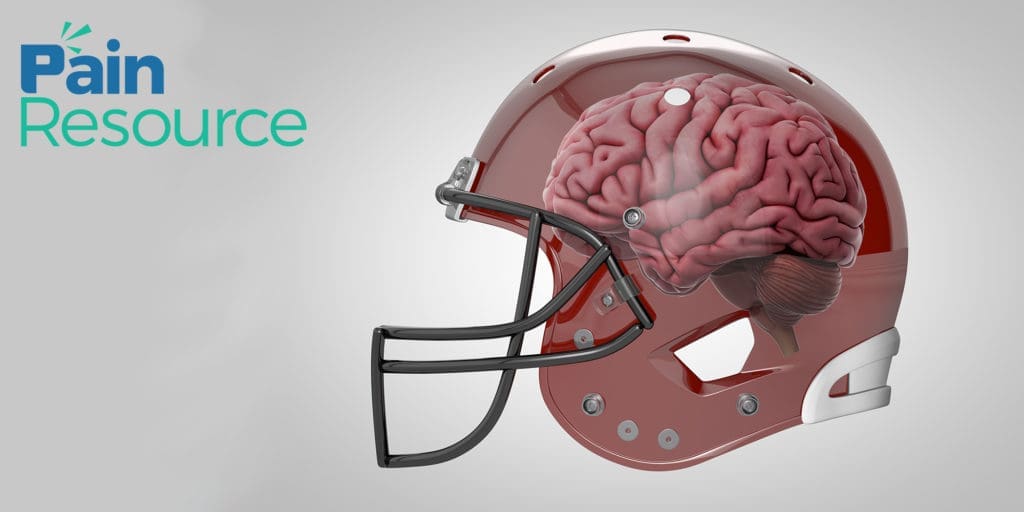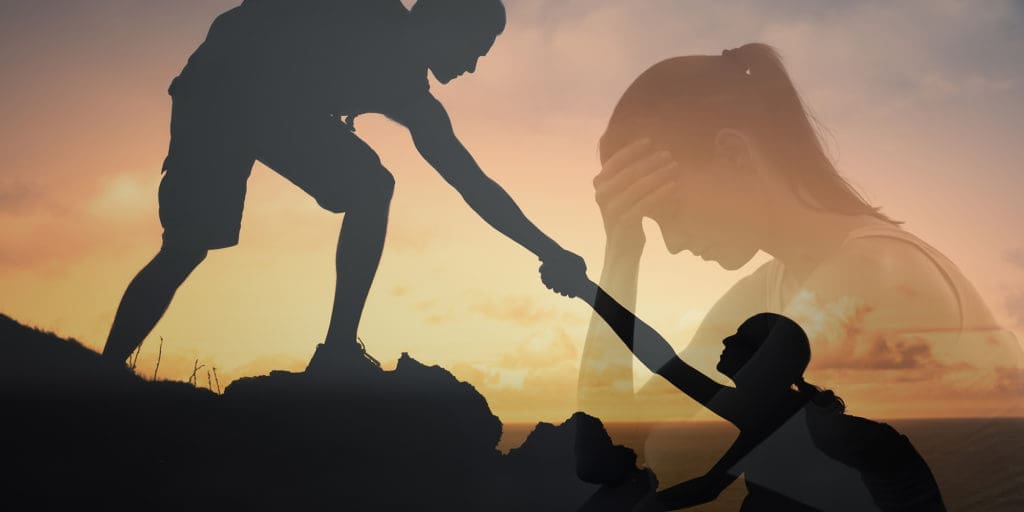The Effects of a Concussion Can Last a Lifetime

A concussion can affect the brain in a number of ways. Some of which can linger for a long time. A concussion can impair cognitive abilities like speech and memory, disrupt normal vision, cause irritability and lead to depression. Multiple concussions can amplify these symptoms, extend the recovery period, and do permanent damage to the brain. Some people may not even know they have a concussion. So after any blow to the head, it is best to see a doctor.
Long-term effects of a concussion can include difficulty making decisions, memory loss, difficulty concentrating, headaches and dizziness. Many people report just not feeling like “themselves”. Luckily, these symptoms usually improve or go away over time.
The NFL and CTE Link


Athletes Aren’t the Only Ones at Risk
Athletes aren’t the only people who run the risk of these types of brain injuries. While it is uncommon for a single concussion to lead to CTE, it is possible. This is especially true if the concussion caused unconsciousness. Any head injury should be treated with the utmost care and assume the worst until the official diagnosis is confirmed.
If you or someone you know sustains a head injury seek medical attention immediately. Symptoms to look out for include a headache, dilated or unusually moving eyes, difficulty waking up, seeing stars, nausea, convulsions, loss of consciousness, difficulty walking, or other strange behaviors or feelings. A series of tests, including an MRI, a CT scan, or an EEG, might be done to make sure there is no unusual swelling of the brain. This can also rule out the risk of seizures or other complications.
There are preventative measures that can aid in avoiding concussions. Always wear protective helmets when riding bicycles and motorcycles or when playing certain sports. Wear a hard hat when working with heavy equipment or entering areas that present a risk. Drive safely, and never drink and drive. Concussion awareness is important, so get educated. The brain is the body’s most important organ, so it is important to take care of it.
Pain Profile of John Murphy: Post-Concussion Syndrome
John Murphy isn’t someone to watch from the sidelines. An avid runner for over 30 years, he’s completed nine marathons and numerous half-marathons and other races. But on October 14, 2010, everything changed for the resident of British Columbia and married father of two young children.
Following his 5-year-old daughter’s soccer practice, Murphy slipped and fell on a wet, slimy slope at the elementary school, hitting the back of his head on solid concrete. His eventual diagnosis following that accident was chronic post-concussion syndrome, and he has had pain and related symptoms ever since, chronicling his efforts to recover in a blog for the Canadian site TheProvince.com, and on his own blog, Concussion-runner.
Murphy is a volunteer program leader at the University of Victoria, where he facilitates a free, six-week Chronic Pain Self-Management workshop that’s open to any adult living in BC. (For other workshops in Canada and in the U.S., see the end of this interview.)
Pain Resource sat down with Murphy to talk about his experience with chronic post-concussion syndrome and his work in helping others manage and recover from their own chronic pain experiences.
Pain Resource: What’s it like to live with chronic post-concussion syndrome, especially from the perspective of pain?
John Murphy: It’s a loose term, but really I sustained a chronic brain injury and I’m not exactly sure if and when that’s going to clear up, but what that means to me as far as the injury is that I get recurring headaches, almost migraines; tinnitus; and periodic cognitive difficulties — a fogginess of the thought process. All of those symptoms have cleared up dramatically over time, but it’s been 8 1/2 years; it’s been a slow process. To a large degree, my recovery has been through my own intuitive ways. I worked with my family doctor, went to see many specialists, clinics, a neuropsychologist, and a physiotherapist on the neck injury I also sustained. Some of these specialists were unable to help a great deal. Although they initially prescribed some medication and rest, that solution wasn’t working for me.


PR: You note in your blog that you have used some “extremely effective concussion rehabilitation programs”…
and that these have resolved most of the serious issues you were dealing with. What symptoms are you still dealing with?
JM: I’m still dealing with mild to medium symptoms — the headache and/or the tinnitus — every day, and the fogginess as well. The gap between the symptoms seems to be getting longer, but they’re still just below the surface. I’ll feel really super one day, two days, and maybe I’ll get into a stressful or fatigued situation and they come back out of nowhere. It’s a long process and can be frustrating, but I have to have an optimistic view that over time the gap between symptoms will get longer with the self-management tools that I have, that I’ll be able to manage the situation at the least and at the best, resolve the problems.
… By nature I’m a self-managed person. Before I went through the Chronic Pain Self-Management workshop, I was talking to our family doctor about what I could or couldn’t do. He said… look at volunteering as part of your recovery and therapy and rehabilitation. So I went down to our community center and read in their magazine a small ad about the workshop. I phoned up the lady who’s now my supervisor… She put me on a 4-day leader training program and I went into a self-management training workshop as a participant… I’ve been doing that for 1 1/2 years, facilitating the workshop. Through being a workshop facilitator I know now what I consider to be a fairly good suite of self-management tools to use and you have the experience in the workshop of working with others that have chronic pain.
PR: Do you see people with all kinds of pain in the workshop, or specific kinds more often?
JM: We do see all kinds, but the program is geared more to musculoskeletal pain, as opposed to pain from a disease like diabetes. (We have a separate chronic disease pain workshop.) But this one is more around musculoskeletal problems, post-surgery pain, accidents — a lot of people like myself where the pain source is not necessarily visible. One of the big stresses and strains around the experience of pain is that you don’t have something like a broken leg, but you’re telling people how much pain you’re in and what you’re going through. There’s a lack of belief, of understanding, even with partners; we invite partners to come along to the self-management workshop. Quite often, it’s a bit of a revelation for them. It validates the story of people in pain.
PR: Your tinnitus was especially debilitating.
You worked with a psychologist working with St. Paul’s Hospital tinnitus clinic using a technique called EMDR (Eye Movement Desensitization and Reprocessing). Can you explain what EMDR is and how it helped you?
JM: It was an amazing experience but it was amazing how I got to the experience. I had been trying to connect with St. Paul’s tinnitus clinic as a result of visiting an ear-nose-throat specialist. They had a long waiting list to get there. Eventually, I got in there and at that moment in time they were looking at people who were interested in going through a research project for an alternative way to deal with tinnitus. I put my name down and there was the selection of the people that would go into the program or into a control group. I was in the test group, which was great…I had never experienced anything like this. Part of my impression of post-concussion syndrome, especially when it’s attached to an accident and that kind of injury, is that there’s a huge amount of trauma in my situation. Note: EMDR is thought to be particularly helpful in dealing with a trauma.
When I went into an EMDR session I was talking to the psychologist and started telling him my story… It’s like a hypnosis; he can direct the eye movement by moving his finger left to right. I would follow his finger for about 30 seconds, or he’d use a light source and my eyes would follow that. Basically, my impression is that what this process does is give you 30 to 40 seconds to really focus on the things that are really traumatic to you, things that are bothering you… Through that process, it’s like a hypnotic situation, you’re conscious, but you’re very focused. A well-trained person can take you almost immediately back to where you need to relive, reprocess, and put that trauma more in the past as opposed to living with that. In my case, we originally booked five to six sessions and we made such great progress, so he did another three to four sessions pro bono.
It was the most amazing experience in terms of going to a psychologist for an hour and getting down to the nuts and bolts of the issues of what you’re dealing with. My knowledge of psychology is that it can be a long process. This got down to my issues really quickly. It was a very, very powerful experience.
PR: I came across your story as part of your participation in the Chronic Pain Self-Management class, where you volunteer as a program leader.
Can you briefly outline some of the principles of the workshop and the approach you take to help adults living with chronic pain?
JM: It definitely is amazing, and I speak as a person still dealing with chronic pain. But also as a very privileged individual, in having the honor of facilitating these workshops and seeing dramatic improvements that people make over a 6-week program, 2 1/2 hours at a time. One thing that sets this program apart is that it’s a peer-to-peer group; they’re individuals that have gone through their own chronic pain situations and in many cases they’re still going through it. There are some similarities to EMDR in that it gets down to the issues very early. It’s very interactive and increases people’s understanding about their pain and how to manage it. It’s also a very open situation, though what is said in the workshop is confidential…
Some of the key things we focus on we call the pain-and-symptom cycle: Pain causes tense muscles. That brings on stress and anxiety, the blues or clinical depression, and fatigue, which again increases the pain. So it’s understanding that whole cycle that goes on. The workshop is also pragmatic in that it teaches that physical activity is very key — to managing fatigue, better breathing, relaxation — and we talk about understanding about medication (we don’t offer any recommendation about what to take, though), discuss broad categories of medication, and how to work effectively with healthcare professionals. Also, the value of action planning — specifically setting goals for yourself. I do that specifically to this day and if I don’t have a thing that I’m aiming toward, I kind of get into the doldrums and a lot of people with chronic pain find that… We also do a lot of guided meditations through the leaders…and discuss effective communication, understanding one’s emotions, and then we do a whole session on finding appropriate resources to help…
In the workshop they get to experience self-management tools and understand what will work for them. There might be three or four things that are useful to them — like eating healthy, physical activity, how to manage fatigue. Sometimes these individuals are alone, so there’s the whole situation of being alone with one’s chronic pain and how to get out of that side of the pain cycle and become more socially involved. Volunteering is another thing we talk about.
There’s a sense of understanding that they’re all dealing with the same thing, an understanding of that cyclical nature of pain. And we offer a set of very pragmatic tools that people can proactively use during the workshop and then take away. So they may say, ‘I’m feeling fatigued. What tools do I have at my disposal?’ It’s very pragmatic in that sense. Also the camaraderie. Just to have 12 people in the room, to think ‘I have chronic pain and I’m in a room with 12 people who also have chronic pain.’ These things aren’t visible…I’m amongst a group that know how I feel.
The most fulfilling aspect of what I do is when we come in there the very first week and I set up a flip chart I ask individuals to fire at me what chronic pain means to them. I get this huge list of negative things: It means I can’t do this, etc. I run the exact same exercise at the end of the workshop: What does it mean to you now? I get a completely different list. ‘If I had never had my accident, I wouldn’t know what I now.’ Also, individuals can come back for a refresher and take the workshop again.
PR: What do you think has helped you most in terms of managing pain and getting on with your life to enjoy it as much as possible in spite of your symptoms?
JM: There are a lot of opportunities out there to help yourself and not to give up and to persevere; don’t give up hope that you’re unable to manage the situation. The most powerful thing is to become your own self-manager. There are plenty of people to help but no one knows you, your body, and your situation as you do; the best person to manage it is you. If there are individuals or groups you can get together with to share — sometimes just sharing the story helps with someone who understands — it can help you not to give up hope.


I want to share my story with others, but also direct to them to the University of Victoria workshops. Their 6-week pain-management workshops are available free of charge for adults in BC. They are also available in other provinces, the U.S., and many other countries.
“I learned that I need to not only set goals from a physical activity perspective, but when the right opportunity comes along for work. I want to stay optimistic and stay strong.”
Take One Step to Live a Pain-Free Life


The most powerful thing is to become your own self-manager, says Murphy. There are plenty of people to help but no one knows you, your body, and your situation as you do; the best person to manage it is you.
A key to becoming your own pain manager is connecting with others, says Murphy, who teaches a six-week Chronic Pain Self-Management workshop,
If there are individuals or groups you can get together with to share sometimes just sharing the story helps with someone who understands it can help you not to give up hope, he says.
Back running marathons, Murphy also recommends setting goals. “I learned that I need to not only set goals from a physical activity perspective, but when the right opportunity comes along for work. I want to stay optimistic and stay strong.”
What questions do you have about Concussions?
Tell us in the comments section below!




